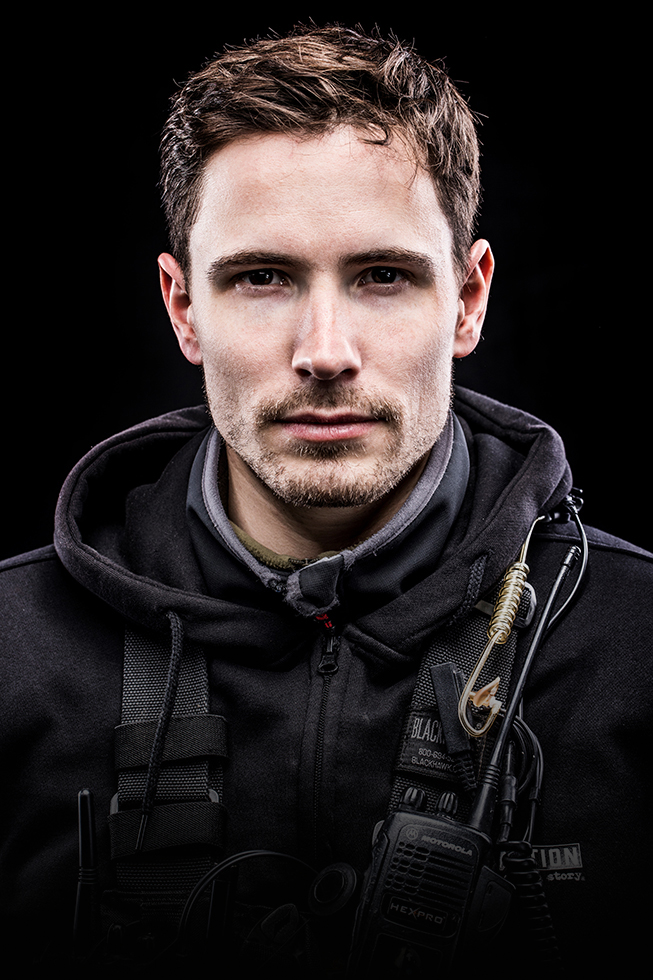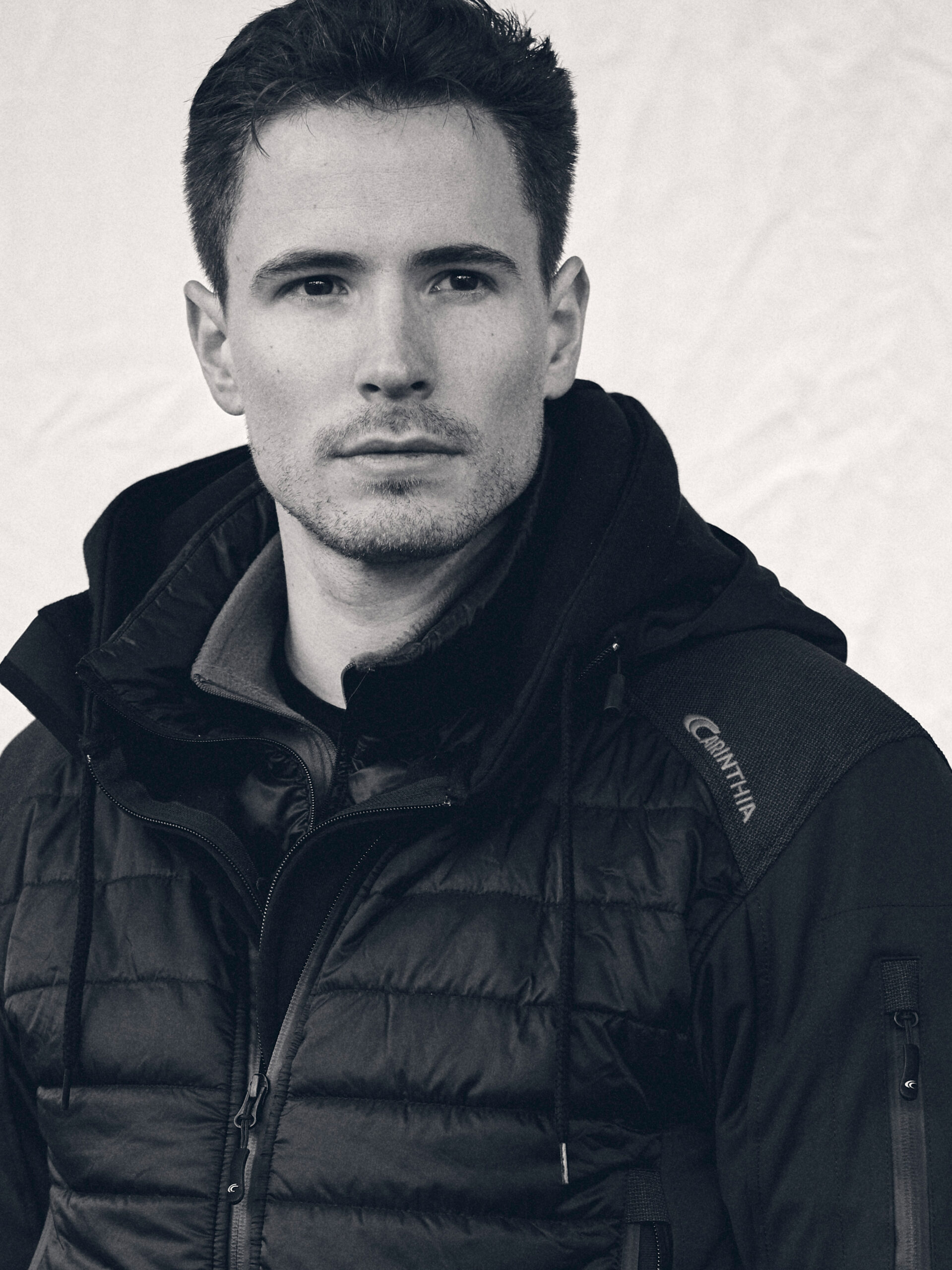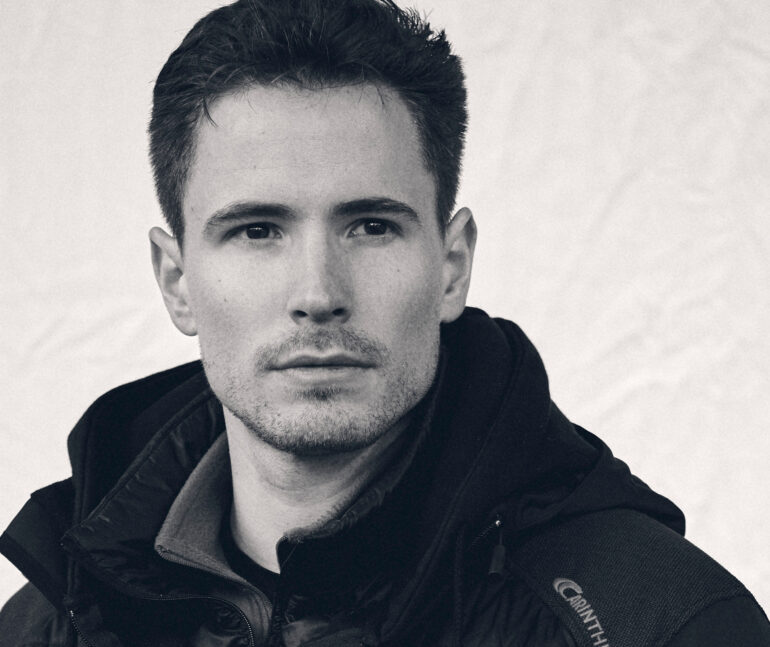Martin Goeres is the Stunt Coordinator of Apple TV’s Constellation and Season 1 of TNT’s The Lazarus Project. In addition to Stunt Coordinating both projects, Martin also served as the Special Effects Supervisor for Constellation and the Second Unit Director for The Lazarus Project. His multi-faceted expertise allows him to create groundbreaking action scenes that integrate visual and practical effects while adding depth to the characters and story.
He stopped by to chat with us about his work on both projects.
How has your special effects background allowed you to think outside the box and develop unique technical solutions for filming and coordinating the action?
Well, I think, for me, the biggest thing was really when I first got the call, I was completely blown away by the first effects even before I could read the script. They just shouted out a couple of words to me, and I remember the producer going, “yeah, we need multiple people doing surgeries in zero G; there will be literally two episodes completely in zero G and then there will be a big fire”. I thought okay, okay, but let’s get back to the zero G part (laughs). Let’s talk again about that, because that was absolutely imminent and this is the biggest technical challenge. We needed some very special solutions for that because if you normally approach scenes where we can do multiple people flying in a scene, no problem; everything has been done. The question now was having this in the sheer number of shots. When I first got the script, what I did is kind of get a get a quick overview of how many shots might be rigging setups, and how many rigging setups I ended up with. I remember I counted way over 200 rigging setups. I’ve seen one rigging setup take a week to perfect, get the actors in then rehearse, and then you can pack this rigging setup up. You have literally all the parts you need for that; you mark it up and you put it in a box for the shooting day. But you have to do that with over 200 rigging setups; that’s impossible in that time. We thought we would come up with something special. The idea was basically, at the time I was incorporating in my workshop a CNC tool, and we just thought it would be cool to have a rig which is basically like a huge CNC tool reaching every area of the set. We can basically move our rigging points and on a smaller scale, this has been done. In this case, we just needed to build this massive rig to reach that 1000 square meters. That was kind of a key factor but then, of course, there were so many things about the story; it’s amazing what Peter Hahn has put together there. I had the first call with Michelle; I remember very well because she was so efficient and she knew exactly what she needed to bring the story to life. It was just amazing to see all those details she had in her mind already. So, I knew we needed a killer team and we needed to make this up right from the beginning, an approach which is normally blowing the limits of our series level work.
I thought the visuals were amazing where everything looked real; you couldn’t tell what was special effects or not. Is it important to you to do as much in camera as much as possible?
Yeah, in my opinion a lot of the time, especially in Germany, I see this still around that there’s a misconception between what visual effects and special effects do and how they work together. Many people even interchange, they say, special effects to computer stuff and they say visual effects to us or they swap it around. I think it’s really important to see that if you go to the top tier level of filmmaking, you always find that visual effects and special effects are working really closely together. Because the great computer artists, kind of the visual effects supervisors they know exactly that they can use real world references much better to actually use this energy which is actually there. Things which are affecting the actors like doing something to the mood or to the story right there in that moment. Changing the lights, even touching the cameras is something very important and for me, it’s always the formula that I tried to get as much practical and real stuff as possible. Then from there on, I just love to have these great visual effects supervisors, kind of having my back. So, once my limits are reached, I show now a trick, something is visible, then they come in and have my back and make me look good. And then from there, take the shots and do extraordinary stuff. I think it’s just together you can reach this level of the movies we all look up to. And if you only have one of each, you are absolutely limited.
Yeah. I believe you come from an acting background as well. How did that help you create the action that aligns with the character’s emotional journeys as well?
Yeah, I think, for me when I read through the script for the first episode, it was so strong. Even when I kept reading, I really was sticking to that first episode of how she feels when she’s in that situation and she actually ends up in that capsule alone. I think from talking to Michelle, it was just really great to see that she had such a strong idea about how those emotions have to be transported, and how especially this relationship, later gets pulled in all directions and gets many, many faces. And I think it was really important that when we attack those action scenes, those critical key moments. For instance, the moment of Paul’s accident, we knew that we have to be very careful to not get in the way of the emotions, because all the technical rigging stuff and all the gear and all the procedures and safety, this can be also in the way. So therefore, my goal was to just create a surrounding that Michelle can work normally on that scene and really create those emotions and build everything up. Then we just apply the zero G effect to it. We prepared it in a way that we don’t need too many tools and too many safety procedures to start with. So, we could kind of do it without zero G first and then once we were sure it works, then we can slowly build in those difficult elements.

Paul’s accident scene, I think has been the toughest thing to watch. I kept turning away as it was so intense. The fact that we were emotionally feeling like that means that you were 100% successful.
Great, thank you. Yeah, I think this was mainly also really big thanks to Will Catlett, because he was amazing doing his own stunts. Right away in the beginning Michelle told me, “I would love to have him hit his head right in front of the camera, like in a close up, basically, I want to see his face, and then the explosion and all this happening. So, we really feel them. We’re really with him”. I said, “okay, sure we will find a way”. And basically, those scenes unless you do really fancy face replacement and everything, which isn’t never just there, you need an actor who wants to do that performance. You need someone who was willing to give that and he was right from the beginning. He was like, “Yeah, sure hit me” (laughs). We rehearsed and we built it up to a moment where we felt we had a very safe surrounding. But he really was willing to take that hit into the crash mat and then we had kind of a safe wall on set. The wonderful Art Department made a safe wall to hit for him. So basically, we were pulling him with the same force like a stunt double. He was really willing to make it live, and then later when we actually hang him when he’s kind of stuck in that wreck, he’s all the time with his energy there and doing it again and again. We said “Maybe we can put you down, we make a break, we use the double for the next shot and just set everything up. But he’s really willing to just continue and that brings the energy. I think in the end, you feel the difference because if someone is willing to go through the pain, and through the struggle, and through the inconvenience to make that performance live, then we feel the difference. I just think that also applies to action; if some productions make convenient decisions to not have explosions or anything on set, and just do it in post you feel it also. Too many productions do it out of convenient reasons.
Would you say that Paul’s accident and the CPR sequence were your favorite stunts to work on from Constellation?
I would say so; basically, the whole zero G thing is kind of like a whole environment that’s its own little thing; microcosms of challenges. I think, of course, a big part was Noomi performing the EVA. She was definitely longest in the suit and these huge, amazing builds by Pierro Hanna. He did those special suits construction and Nicole Fischnaller the costume designer, but production value always comes with the price and then in this case, this is also weighed. Of course, the suits were heavy; everything’s made for zero G, but we are in gravity. So, now we have an actor which is supposed to be relaxed and perform. Now on the other hand, you have to lift not only your body back in zero G and be in attention, but you have to now plank this whole heavy suit, and lift everything up. And of course, we try to help with wires, but we can only attach so many wires to these delicate suits. Therefore, this was definitely to make this authentic and believable moment, which is crucial because she is discovering something which we as an audience need to believe her. I think it would have been totally in the way if there would be full on CG and we don’t really believe she was touching anything or seeing anything. That’s why I think in this specific EVA work those rear sets helped a lot. Michelle made great decisions there to get those real objects, which then get together with our amazing. widescale visual effects shots. So, everything blends in perfectly. As soon as we get closer, she has real reflections, real sets, and she can touch something and she can find out where she is. We just brought her in with a specially constructed stand fork, which was a little bit different build from the normal ones because we had to deal with the heavy weight of the suit. Noomi had to go through, again, some challenges to really make this possible.
She’s fantastic; love her in everything.
Yeah. I mean, so many moments when I was on set, just watching her and so much fuss always when actors come on set and so many little things like back and forth, and we could start and then suddenly everything’s quiet. Now you perform, and it’s difficult. Just to see her to deliver, like in seconds every time. That was just amazing and to get this emotional connection right away.
Moving on to The Lazarus Project. How did you combine your entire skill set to create some of those car chases?
Well, The Lazarus Project for me was an amazing opportunity when the director Marco Kreuzpaintner, a good friend of mine, I’ve known him for many years, and he just called me. I was just finishing The Matrix, and I was doing special effects. He called me saying “I have a project. There’s this chase and there are many chases, but there’s this chase where everything is about life and death. They know they’re gonna die at the end, but they have to reach this particular goal and it’s so intense and it’s going to be in Paris. We have to make this epic” and I thought, “oh, okay, that’s interesting. Let’s get into it.”
So, the great thing was really that I had a production team and executive producer and director who was really trusting in me to completely direct and design action for the show. There’s just always a great opportunity, because I’ve done second unit directing a lot before but it’s always different. Depending on the show, sometimes you just run a small element, and you just do one particular scene, sometimes you have more responsibility to connect things and actually direct scenes in a way that you tell a story. And you’re also responsible for making it work with the rest of the film. But it might be something really small sometimes in this case, it was huge, because I knew that Marco had so many units to deal with, and so many elements to really bring on the main unit, that there was a lot of action pieces, and particularly this chase scene in Paris, and the first episode, which I could really completely direct and deliver a lot of things. For me, it’s the best kind of work, because now I can bring all my skills and all the background from special effects and stunts and acting and everything I know, I can bring it together and have an amazing team, and then just get the best out of it. And just try to push everyone’s strong side.

You’ve been working on a couple of short films. But do you also have any plans to move into directing a full feature at some point?
Yes, I think that everything is going in the direction; fingers crossed, because as I said, whenever I went to direct or second unit direct, I felt that things come together and kind of fall into place. I got a lot of credit from different parts of the crew, camera, and even stunts or anyone that they actually told me that they thought it’s refreshing that somebody knows that craft and respects that craft, because I’ve seen so many different aspects about filmmaking. I think true respect is nothing you can really fake or make. It’s something people feel on a subconscious level. And on this basis, there’s so much possible; I think it’s just that if humans feel well, they perform better. That’s my role for team leading, in any case. So, if I want the whole crew to perform 110%, then I need to make sure they feel respected and well. I think that’s just for me, it’s so much fun to work like that. When I did this, I just found out these are the positions, I can actually do the best in making films and using all my experience. I created just recently, a little short film, did some commercials and I just last week directed a commercial for a bigger defence company. Basically, this goes further in that direction, I think.
Thank you so much for taking the time to chat with me today and I look forward to seeing your directorial debut soon hopefully.
Thanks so much for this. It was really good.






